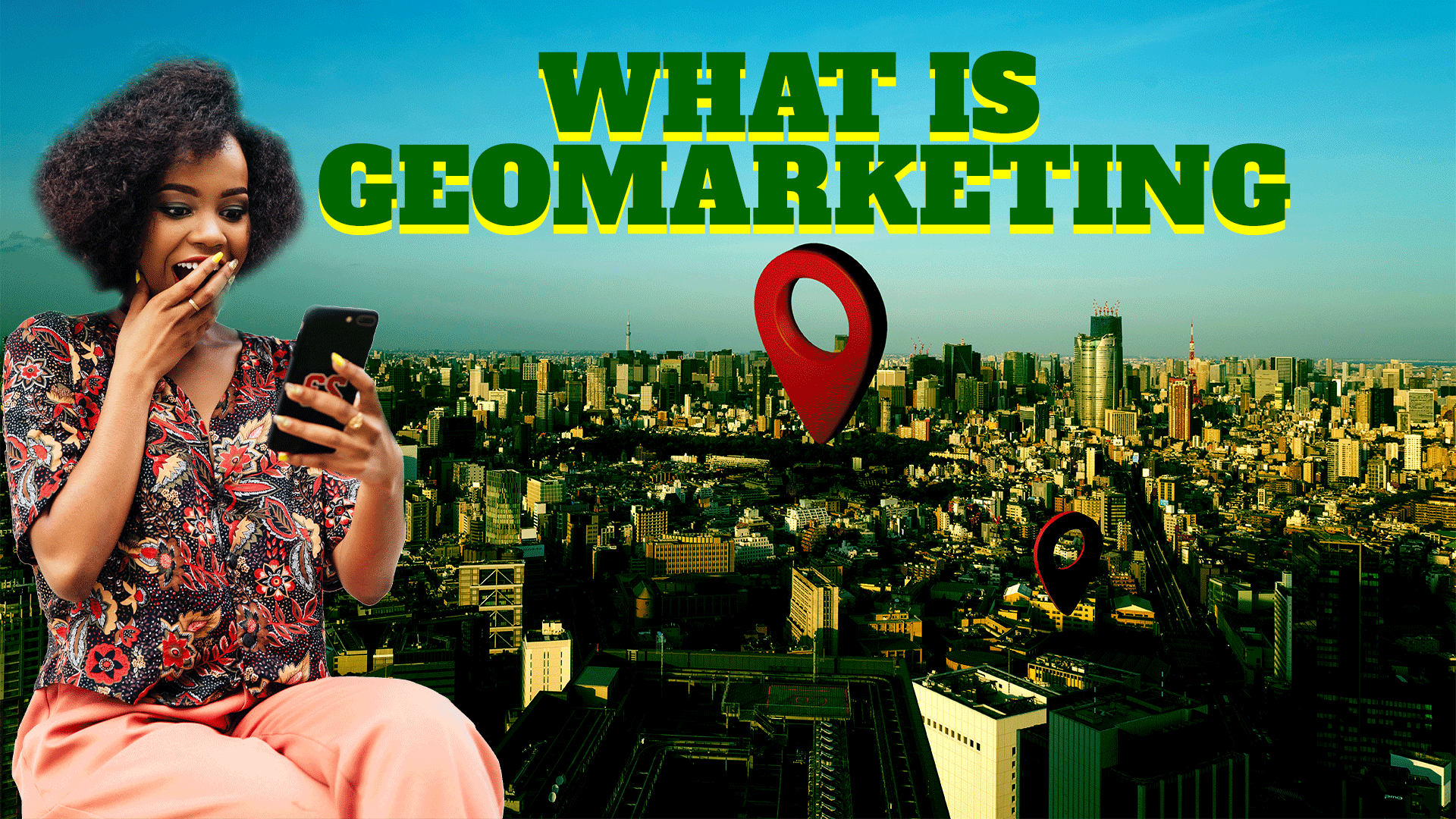So, what exactly is geomarketing? How does geomarketing work?
Geomarketing is a marketing strategy that uses location data to target consumers in specific areas.
Have you ever wondered why that coffee shop notification pops up just as you're passing by? Or why a local bank offers you a loan right when you shifted to that city? It’s not magic—it’s a well-crafted strategy using geomarketing.
In this post, we dive deep into real-world examples of geomarketing strategies, explore digital marketing tactics for location-based targeting, and discuss privacy concerns that make you question just how much of your daily journey is tracked.
What Is Geomarketing? - Digital Marketing Strategies for Location-Based Targeting
Geomarketing uses geographic data to deliver personalized marketing messages exactly when and where you need them. It’s all about turning your location into valuable data for businesses looking to connect with you. Companies use location-based marketing techniques like geofencing, where an invisible boundary triggers a tailored offer when you enter a specific area, to enhance your experience.
Understanding how geomarketing works means looking at real-world examples and digital marketing strategies for location-based marketing, so let's look at a few examples;
-
Retail Promotions for Impulse Buys:
Imagine walking past a boutique and receiving a discount alert on your phone. Retailers set up geofences to trigger offers exactly when you’re near their store. -
Event-Based Marketing That Connects Locally:
At local festivals or concerts, brands send you exclusive offers based on your location. It’s a strategy designed to make events even more engaging. -
Localized Online Advertising:
Even your web browsing can change depending on where you are. Companies use your location data to tailor online ads that feel more personal and relevant.
How Does Geomarketing Work? Real-World Examples of Geomarketing Strategies
When we talk about geomarketing, it’s more than just triggering a notification when you’re near a store. It’s a process that combines geographic information systems (GIS) with digital marketing strategies. At Buniwa Creations, we use GIS (Geographic Information Systems) techniques, to design and execute effective location-based campaigns:
1. Data Collection and Integration
What It Involves:
- Gathering Geospatial Data:
- Sources: Smartphones (via GPS and Wi-Fi signals), mobile apps, IoT devices, and even satellite imagery. High-quality, geo-referenced data ensures that every piece of data has accurate coordinates (latitude and longitude) and is collected using reliable sensors or data providers.
- Integration:
- Digital Marketer’s Approach: Import collected data into a centralized GIS platform. This data might include customer locations, foot traffic patterns, and even demographic information.
- Tools Used: GIS software like ArcGIS Online, QGIS, or cloud-based mapping solutions that allow you to overlay various datasets.
2. Spatial Analysis and Visualization
What It Involves:
- Mapping and Analysis:
- GIS Techniques: Spatial analysis tools are used to create heat maps, perform cluster analysis, and identify high-traffic areas or “hotspots.” This helps pinpoint where your target audience is concentrated. With these visualizations, marketers can determine which areas to target for geofencing and localized promotions.
- Overlay Analysis: By overlaying different layers of data—such as competitor locations, demographic information, and consumer behavior patterns—marketers gain insights into market gaps and opportunities.
3. Creating Geofences and Defining Target Areas
What It Involves:
- Establishing Virtual Boundaries: GIS tools are utilized to draw precise geofences around areas of interest. These could be around retail locations, event venues, or even competitor hotspots.
- Digital marketers define the radius and shape of your geofence based on insights gathered from spatial analysis. This ensures that your marketing messages are delivered only when potential customers enter these strategic zones.
- Segmentation: Spatial segments are used to tailor offers and messages specifically to each area, thereby enhancing the relevance of your campaigns.
4. Execution of Real-Time Marketing Campaigns
What It Involves:
- Triggering Actions:
- Mechanism: When a user’s device crosses a geofence, the system triggers a push notification, SMS, or in-app message.
- These triggers are integrated with your customer relationship management (CRM) system or marketing automation platforms to ensure a seamless and personalized communication flow.
- Dynamic Content:
- Optimization: Customize the content based on the time of day, current location, and even past interactions. This is where real-time data drives immediate, context-aware engagement.
5. Monitoring, Evaluation, and Optimization
What It Involves:
- Tracking Performance:
- GIS Tools: Use dashboards and analytical tools within your GIS platform to monitor key performance indicators (KPIs) such as foot traffic, dwell time, and conversion rates. Evaluate which geofenced areas are performing best and adjust your strategies accordingly.
- Continuous Improvement:
- Feedback Loop: Use insights from the analysis to refine your geofences, tweak messaging, and improve targeting precision over time.
The Benefits of Geomarketing: How Does It Enhance Customer Experience?
Geomarketing offers numerous benefits that go far beyond mere convenience:
1. Personalized Customer Experience
- Value: Tailored messages and offers make you feel seen and understood.
- Example: Imagine receiving a coupon for your favorite ice cream shop exactly when you’re craving a treat on a hot day.
2. Increased Engagement and Conversion Rates
- Value: Timely notifications lead to higher engagement, as offers are relevant to the moment.
- Example: A location-based alert prompts an immediate visit to a store, boosting sales and foot traffic.
3. Efficient Marketing Spend
- Value: By targeting only the relevant audience, businesses reduce wasted ad spend.
- Example: Instead of broad, untargeted ads, companies invest in campaigns that reach consumers who are most likely to convert.
4. Enhanced Customer Insights
- Value: Detailed analytics provide deeper understanding of customer behavior and preferences.
- Example: Tracking the movement and response patterns can help refine future marketing campaigns.
Privacy Concerns In Geomarketing
While geomarketing offers convenience, it also raises important privacy questions. Every location-based alert means some of your personal data is being used. Ask yourself: Is the trade-off between personalization and privacy worth it? How do we balance targeted offers with safeguarding our personal space?
1. What Are the Data Privacy Concerns?
- Tracking Without Consent: Many users worry that their movements are being tracked without explicit permission.
- Data Security: The risk of data breaches can expose sensitive personal information.
- Lack of Transparency: Often, users aren’t fully aware of how their location data is being collected, used, or shared.
2. How Can Digital Marketers Ensure Privacy?
- Obtain Explicit Consent: Always ask users for permission before tracking their location. Use clear, simple language to explain what data is collected and why.
- Implement Strong Security Measures: Encrypt data both in transit and at rest, and regularly update security protocols.
- Be Transparent: Maintain a comprehensive privacy policy that clearly outlines data collection, usage, and sharing practices.
- Offer Opt-Out Options: Allow users to opt out of tracking without losing access to essential services.
3. How Can Users Protect Their Data?
- Review Privacy Settings: Regularly check and adjust your smartphone and app privacy settings.
- Use Privacy Tools: Consider using VPNs, privacy browsers, or apps designed to limit tracking.
- Stay Informed: Keep up with privacy policies and updates from the apps and services you use.
- Educate Yourself: Understand the implications of location tracking and take proactive steps to manage your data.
The Future of Geomarketing: Emerging Trends in Digital Marketing for Location-Based Targeting
As technology continues to evolve, so too will geomarketing strategies. Here are some emerging trends to watch:
1. AI and Machine Learning Integration
- Trend: AI will enable more accurate prediction models and personalized experiences.
- Impact: Expect hyper-personalized offers based on real-time behavioral analysis.
2. Enhanced Cross-Channel Integration
- Trend: Geomarketing will merge with other digital channels like social media, email marketing, and IoT devices.
- Impact: A seamless, omnichannel experience that tracks and engages users across multiple touchpoints.
3. Greater Emphasis on User Consent and Data Security
- Trend: Stricter data protection laws and increased user awareness will push marketers to adopt more ethical practices.
- Impact: More transparent data collection methods and innovative solutions to balance personalization with privacy.
Conclusion
Our exploration of geomarketing has shown that it’s more than just a clever marketing trick. It’s a sophisticated blend of data analytics, digital marketing strategies, and real-time engagement that offers undeniable benefits—while also raising important privacy concerns.
As you reflect on your experiences—those perfectly timed discount alerts or location-based recommendations—ask yourself: Do the conveniences of personalized marketing outweigh the potential risks? Are you comfortable with the data being collected, or do you believe there should be clearer boundaries? For digital marketers, the challenge is clear: harness the power of geomarketing responsibly by protecting user data and being transparent about data practices.
Ultimately, the future of geomarketing lies in finding the right balance between personalized experiences and respecting user privacy. Whether you’re a business or a consumer, staying informed and proactive is key.
- Author: Giulio
- Category: LBM
- Date:






0 Comments
Add a public comment...
Be The First One To Post A Comment